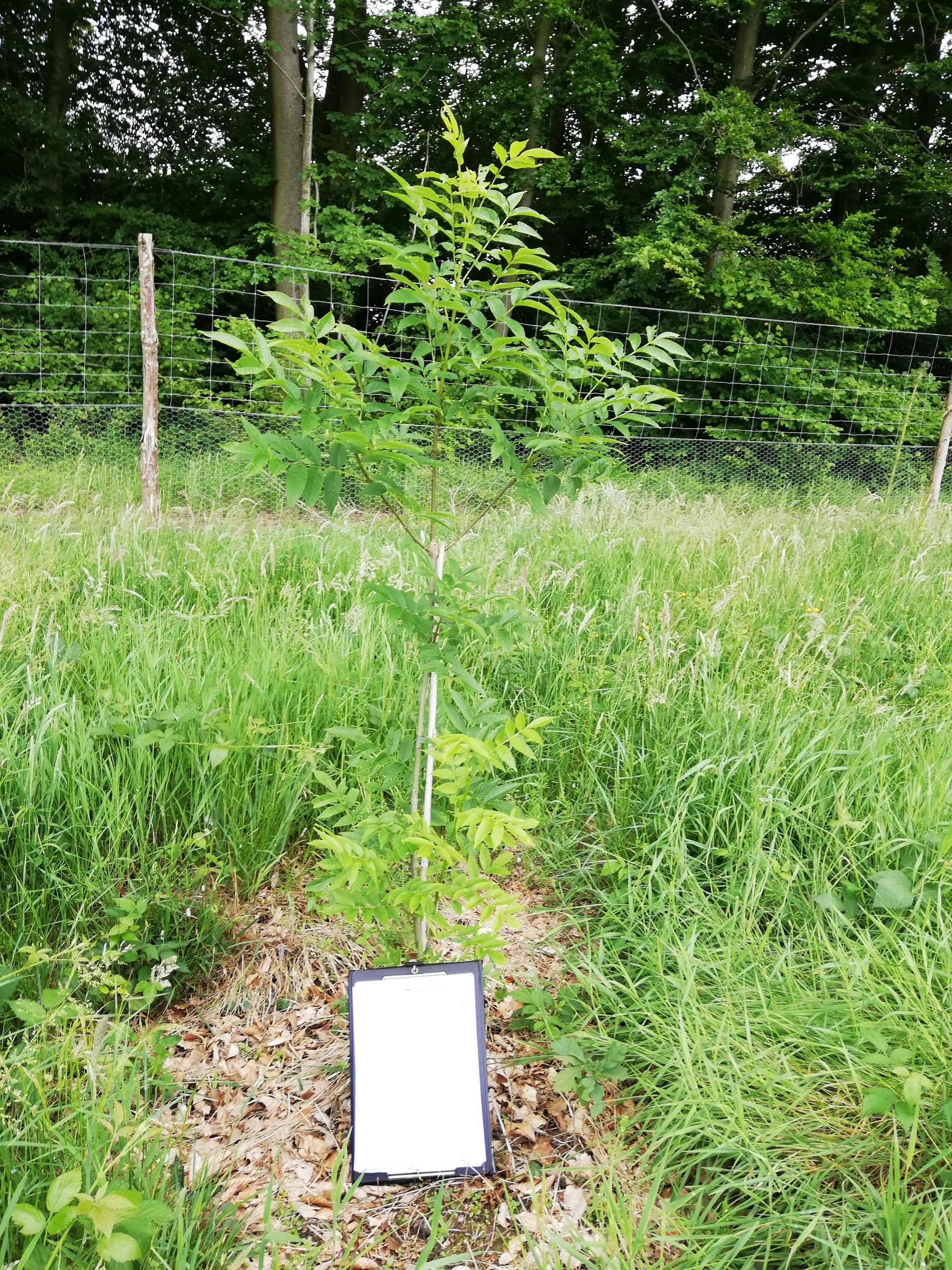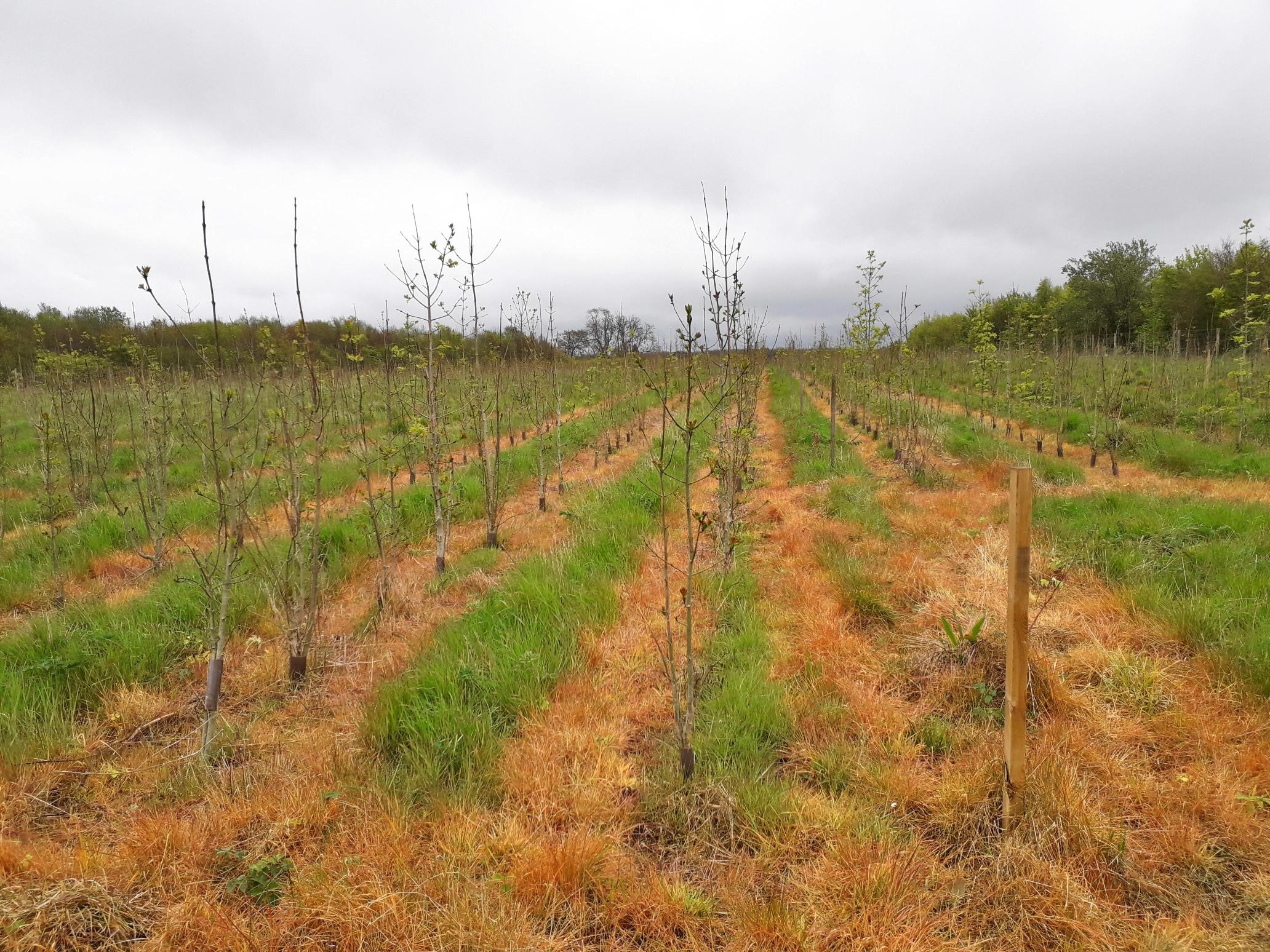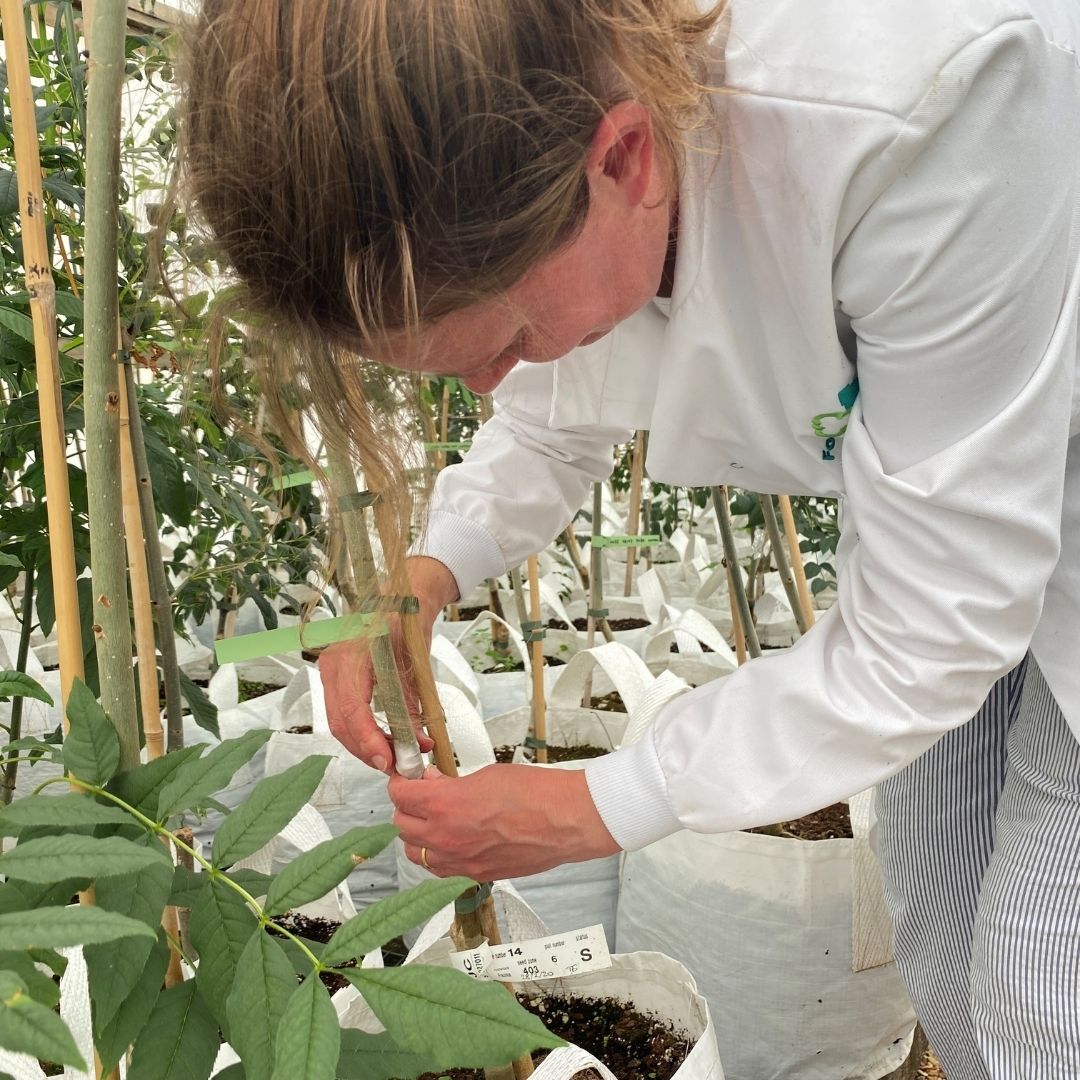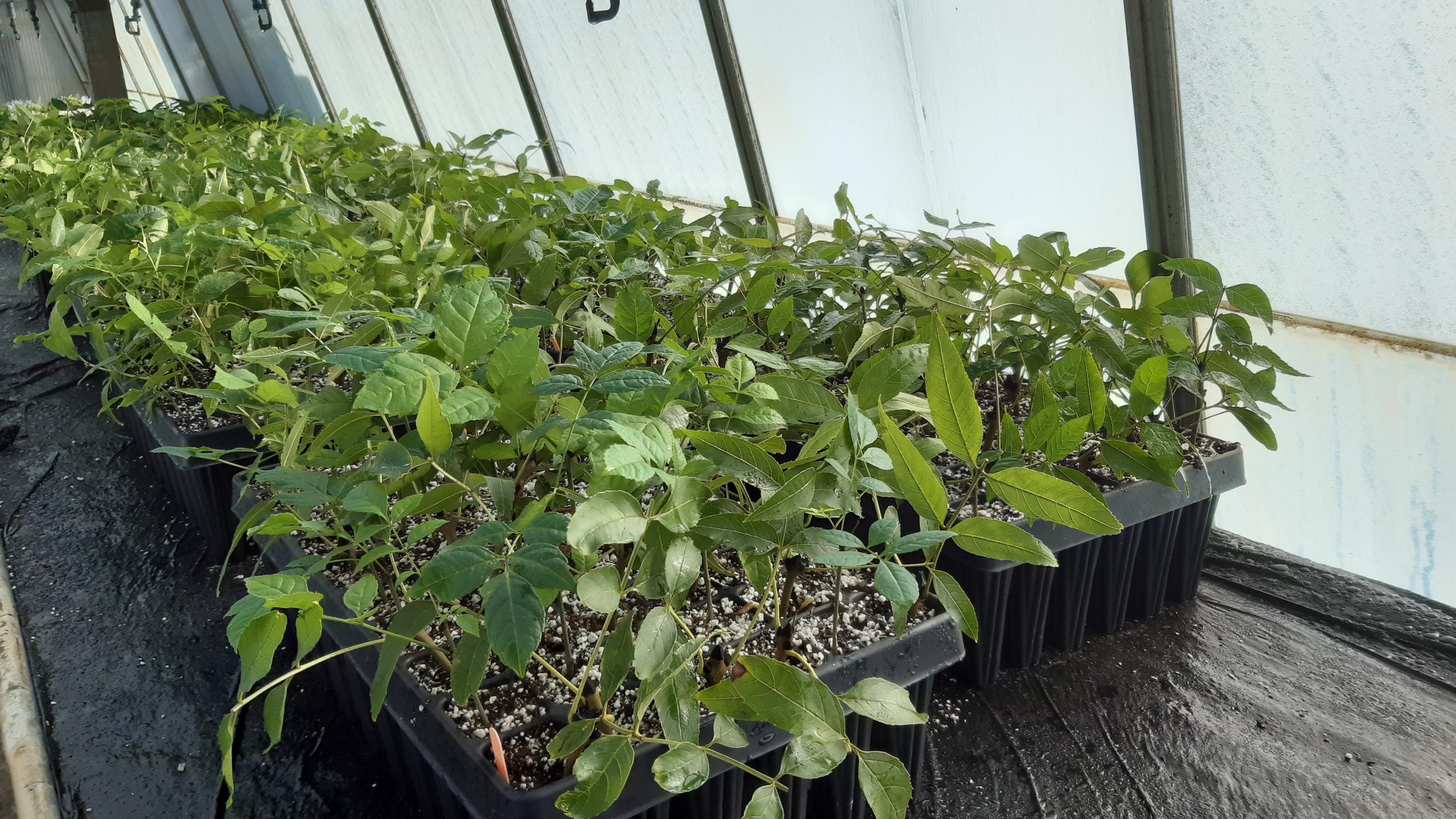Living Ash Project blog – May22
By Dr Joe Beesley, Future Trees Trust Researcher.
The Living Ash Project aims to identify ash trees across the UK with good tolerance to ash dieback and understand this tolerance through different screening methods.
We can combat ash dieback through harnessing the natural genetic diversity within ash. By bringing together trees showing high levels of tolerance we can start a new breeding programme for ash to ensure it remains a viable option for forestry and the wider environment.
National Archive of Tolerant Ash – safeguarding tolerance
The first phase of the Living Ash Project ran from 2013 – 2017 and identified almost 1,000 potentially tolerant ash trees. Grafts of these tolerant selections were taken and planted at an archive site managed by Forestry England. Known as the National Archive of Tolerant Ash, the site has up to 3 copies of each selection planted and is being monitored twice a year to see how our selections are faring in the field.

Not too surprisingly, many of the trees at the archive are showing symptoms of ash dieback and approximately 40% have died. However, at the last assessment in October 2021 we saw some encouraging signs from many of our selections. Almost 20% of the trees on the site still show no signs of ash dieback almost two years after planting, and a further 17% show only very minor symptoms. These numbers are likely to decrease over time as the disease progresses, but they are positive signs that natural tolerance can be found.
Trial assessments – sources of tolerance
When ash dieback was declared present in the UK, tens of thousands of ash plants were sitting in Forestry Commission nurseries waiting to be planted. Instead of being destroyed, these saplings were quickly established in series of large trials across the south-east of England. By planting these plants in the most afflicted area of the country, the hope was that the tolerant individuals could be identified.
Known as Mass Screening Trials, these sites are still being maintained by Forest Research and are sited with a variety of different landowners. Several progeny trials, once used for tree improvement, are now also monitored for tolerant individuals.
Two trials were recently assessed for ash dieback symptoms and although no tree was found without symptoms, a very small fraction, about 1%, showed only very minor infection. Given the high disease pressure at these sites, these trees could become future tolerant selections for further investigation.

Controlled inoculations – testing our selections
Forest Research are also working to test how tolerant our tolerant selections really are. By directly infecting grafts of these trees with the fungus responsible for ash dieback, we will see how well our selections fare.
We are testing them in two ways. Firstly, some of the trees will have a wood plug colonised with the fungus taped against an incision in the bark. This provides a direct route of entry for the fungus. Secondly, some trees are having fungal spores applied directly to their leaves in a process that mimics how the infection typically starts in our woodlands.
The trees will be left to grow in the polytunnel for a year and then assessed for ash dieback symptoms to see how they have coped with these controlled inoculations.

Vegetative propagation – replacing grafting
Currently, the replicate one of our tolerant ash trees will use grafting. This process involves collecting cuttings when the tree is dormant and grafting these onto the rootstock from a different, unspecified ash tree. Grafting is highly effective for ash but the tree that provided the rootstock is unlikely to have any tolerance to ash dieback and the fungus may infect the tolerant top of the graft through the roots.
To avoid grafting and get the tolerant ash cuttings on their own roots, Royal Botanic Gardens, Kew are developing protocols for vegetative propagation. They are testing a range of substrates and hormone treatments, comparing cuttings collected in the spring to those collected in the summer. The experiments are currently underway, and the team are hoping to find the right combination for effective root growth. The protocol they develop will be used for all our future propagation.

Searching for tolerant trees
During the final stages of this project, we will be visiting woodlands across the country to see how our original tolerant selections are faring 5 years on. We will also be selecting new tolerant selections for inclusion in the National Archive.
There are millions of ash trees in our countryside, and we really need your help. If you know of any ash trees, within a woodland setting, that look healthy but are surrounded by ash that are badly infected with ash dieback then we want to hear from you!
You can report these trees on the Report a Tree tab of our website.

